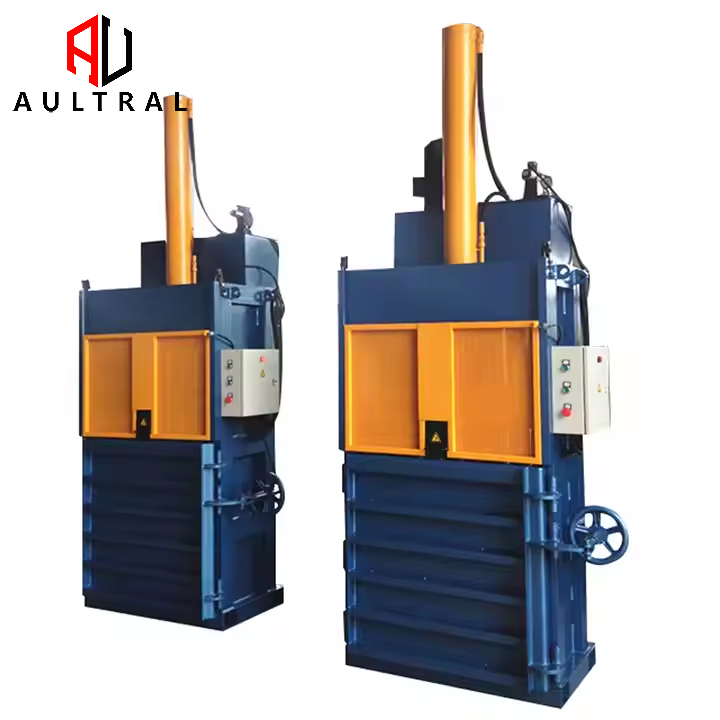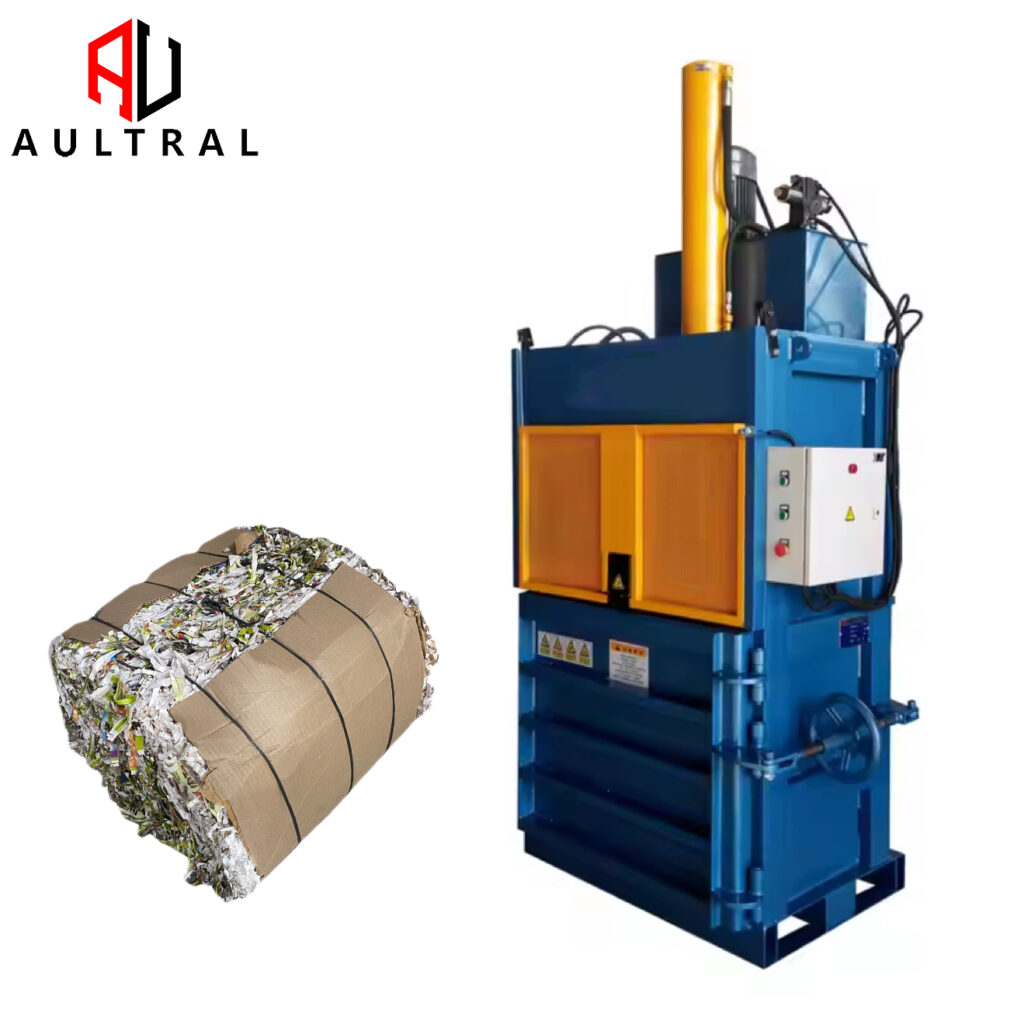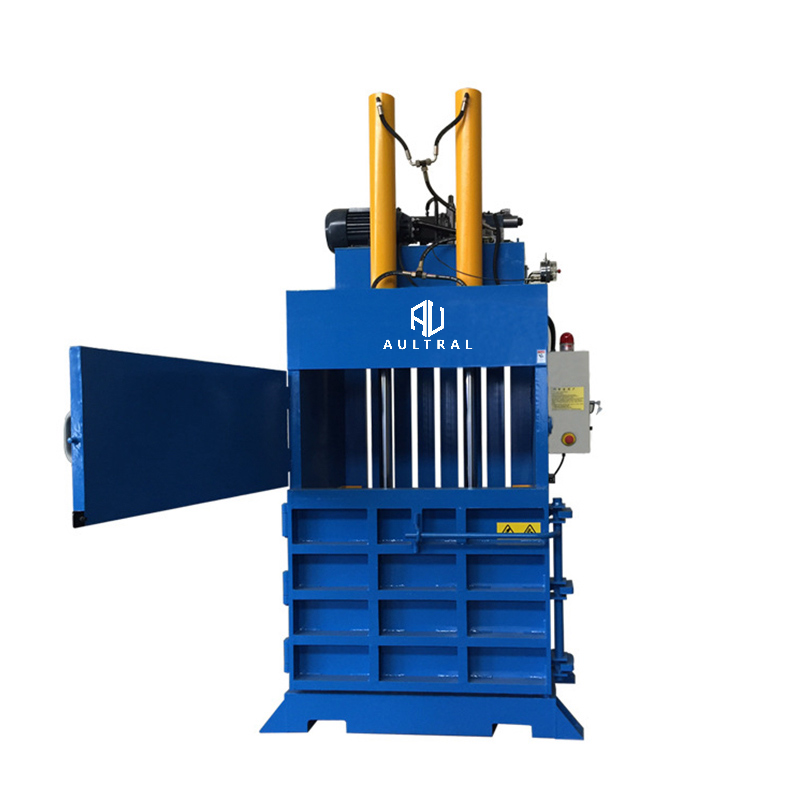Introduction
In today’s recycling-driven economy, businesses across industries are searching for efficient, sustainable, and cost-effective ways to handle waste. While metals often receive attention in the recycling world, non-metal materials such as cardboard, plastics, textiles, paper, and foam actually account for a significant portion of industrial and commercial waste. Managing these bulky, lightweight, and sometimes irregular materials can be challenging without the right equipment.
This is where vertical hydraulic balers come into play. Known for their compact footprint, strong compressive force, and ease of use, these machines are widely used for compressing non-metal materials into dense, manageable bales. But with multiple types, specifications, and features available, how can you choose the right one for your business?
This guide will walk you through everything you need to know about vertical hydraulic balers for non-metal recycling — from how they work and what benefits they bring, to key selection criteria and practical buying tips.
What is a Vertical Hydraulic Baler?

A vertical hydraulic baler is a machine designed to compress loose recyclable materials into compact bales using hydraulic pressure. Unlike horizontal balers, vertical models load materials from the top, and the compression plate moves vertically to apply downward force.
They are particularly suitable for low-to-medium volumes of waste, and because of their smaller footprint, they are popular among retail stores, warehouses, small recycling facilities, and manufacturers dealing with non-metal materials.
Key characteristics include:
-
Hydraulic cylinders that deliver powerful compressive force.
-
A vertical compression chamber with a front-loading door.
-
Manual or semi-automatic strapping systems to tie finished bales.
-
Bale sizes that typically range from 50 to 500 kg depending on the model.
Why Non-Metal Materials Need Specialized Baling

Non-metal waste has very different physical properties compared to metals:
-
Lightweight and bulky – Cardboard boxes, PET bottles, and plastic films occupy a lot of space but have low density.
-
Irregular shapes – Clothes, textiles, and foam are difficult to stack or transport efficiently.
-
Volume-driven disposal cost – Businesses often pay for waste disposal based on container size, not weight.
A vertical hydraulic baler addresses these issues by reducing volume up to 90%, turning otherwise unmanageable waste into dense, uniform bales that are easier to store, transport, and sell to recyclers.
Benefits of Using a Vertical Hydraulic Baler
Investing in the right baler can bring multiple advantages to your operation:
-
Space Saving: Compacting materials reduces the storage area needed for waste.
-
Lower Transportation Costs: More material per load means fewer trips and reduced logistics expenses.
-
Improved Recycling Value: Well-baled, uniform materials are more attractive to recyclers and fetch higher prices.
-
Operational Efficiency: Employees spend less time handling loose waste.
-
Environmental Impact: Businesses contribute to sustainability by ensuring non-metal waste enters the recycling loop rather than landfills.
Types of Vertical Hydraulic Balers for Non-Metal Materials
Vertical hydraulic balers come in different configurations depending on application needs:
-
Single-Chamber Vertical Balers
-
Best for businesses handling one type of material, such as cardboard or PET bottles.
-
Simple, economical, and easy to operate.
-
-
Multi-Chamber Vertical Balers
-
Equipped with multiple compartments to process different materials simultaneously.
-
Ideal for businesses that generate mixed recyclables.
-
-
Heavy-Duty Vertical Balers
-
Designed for large volumes or tough materials like hard plastics or rubber.
-
Higher compression force and larger bale size.
-
-
Specialty Vertical Balers
-
Built for specific applications such as textile recycling or foam compression.
-
Key Factors to Consider When Choosing a Vertical Hydraulic Baler

When selecting the right baler for your non-metal recycling needs, consider the following aspects carefully:
1. Type of Material
-
Cardboard & Paper: Requires medium pressure, with bale sizes around 200–400 kg.
-
Plastics (PET bottles, films): Needs higher compression due to material spring-back.
-
Textiles & Clothes: Soft, compressible but may require chamber modifications.
-
Foam & Fiber: Lightweight but bulky; requires special plates to achieve effective baling.
2. Baling Capacity
-
Estimate your daily or weekly waste generation volume.
-
Small retail shops may only need a 50–100 kg baler, while warehouses might require 300–500 kg units.
3. Machine Size and Space
-
Vertical balers are compact, but you must still account for ceiling height and loading space.
-
Ensure there is enough clearance for bale ejection and tying operations.
4. Bale Weight & Dimensions
-
Choose bale sizes that are compatible with your handling equipment (e.g., pallet jacks or forklifts).
-
Overly heavy bales can create safety issues.
5. Operation Mode
-
Manual balers: Require more labor but cost less.
-
Semi-automatic balers: Save time and increase productivity.
6. Safety Features
-
Look for interlocking doors, emergency stops, and automatic pressure release systems.
-
Safety certifications (CE, ISO) add credibility.
7. Maintenance and After-Sales Support
-
Hydraulic systems require regular inspection.
-
Choose a manufacturer with reliable customer support and available spare parts.
Cost Considerations
The price of vertical hydraulic balers varies widely depending on size, pressure rating, and automation level.
-
Entry-level models: $2,000–$5,000
-
Mid-range units: $5,000–$10,000
-
Heavy-duty or specialized models: $10,000+
While cost is an important factor, focus on total cost of ownership: durability, maintenance, energy consumption, and productivity all influence long-term savings.
Steps to Implement a Vertical Hydraulic Baler in Your Business
-
Assess your waste stream – Identify the types and quantities of non-metal materials you generate.
-
Choose a suitable model – Match machine specifications to your needs.
-
Prepare the installation site – Ensure adequate power supply, floor space, and ventilation.
-
Train employees – Safety and operational training are crucial.
-
Set up collection and recycling partnerships – Work with local recyclers who can buy your baled materials.
-
Monitor performance – Track bale output, storage efficiency, and transportation savings.
Future Trends in Non-Metal Baling
-
Automation & IoT Integration: Smart balers that monitor bale counts and maintenance needs.
-
Energy-Efficient Hydraulics: Reduced power consumption with advanced pump systems.
-
Customizable Bale Sizes: Flexible designs to match different recycler requirements.
-
Sustainability Certifications: Machines designed to meet stricter environmental standards.
Conclusion
Choosing the right vertical hydraulic baler for non-metal materials is not just about buying a machine — it’s about making a strategic investment in your business’s efficiency, cost control, and sustainability efforts. By carefully considering material types, capacity, space, safety, and after-sales service, you can find a baler that perfectly fits your recycling needs.
As non-metal waste continues to rise worldwide, businesses that adopt proper baling solutions will gain a competitive edge — saving money, reducing environmental impact, and building a greener future.
